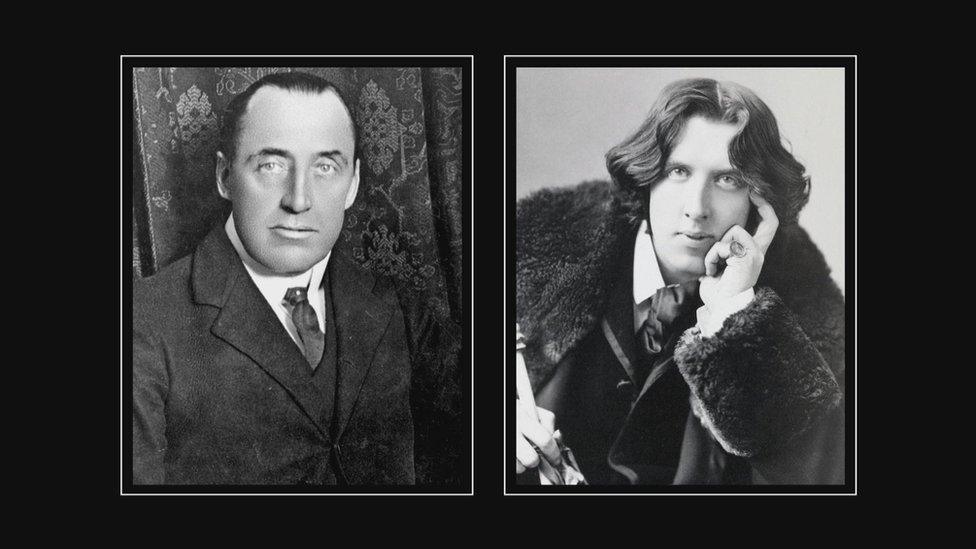The 'riches of Northern Ireland' on show in Dublin
- Published
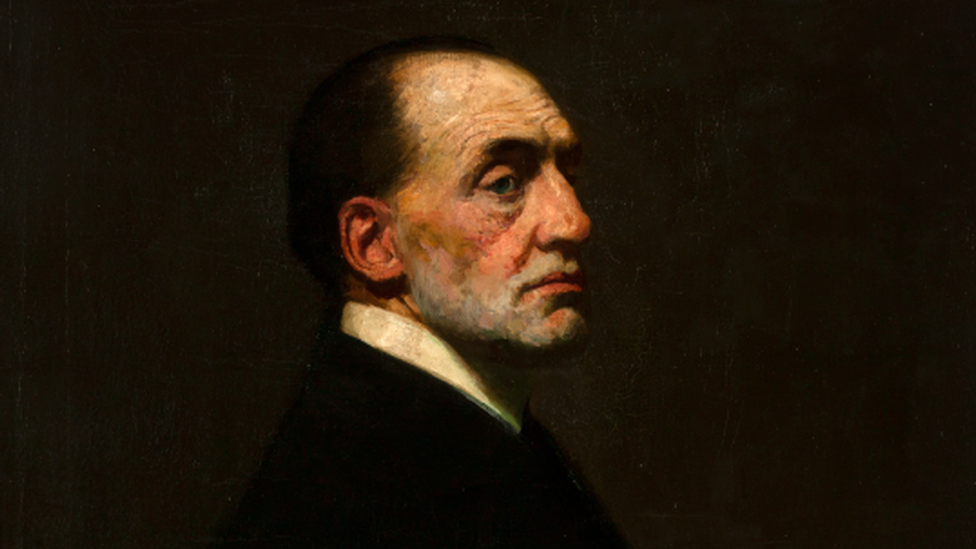
A portrait of Dublin-born unionist leader Lord Carson features in the exhibition
An exhibition to "introduce and re-introduce Northern Ireland" has opened in the Republic of Ireland.
Thirty-five handpicked items from the National Museums NI (NMNI) collection will be on display at the Little Museum of Dublin until 6 June.
It includes a 1911 painting of Lord Carson and a Home Rule pocket game.
Other items include a cast of the Crumlin meteorite which fell in 1902 and a flying shuttle to represent Ulster's linen heritage.
Kathryn Thomson, National Museums NI chief executive, said there were many perceptions about Northern Ireland.
She added it was hoped the You Say You Love Me But You Don't Even Know Me collection would allow people to "understand us a bit better and understand that maybe we're not as different as we think we might be".

The Irish Harp by Hugh Clawson incorporates a Webley revolver and the dying Cúchulainn
"Northern Ireland is often seen in very binary terms, and very much orange and green, but there's much more complexity to our past and to our identities and to our history than I think people often appreciate and understand," she said.
"The objects in our collection can really speak to that."
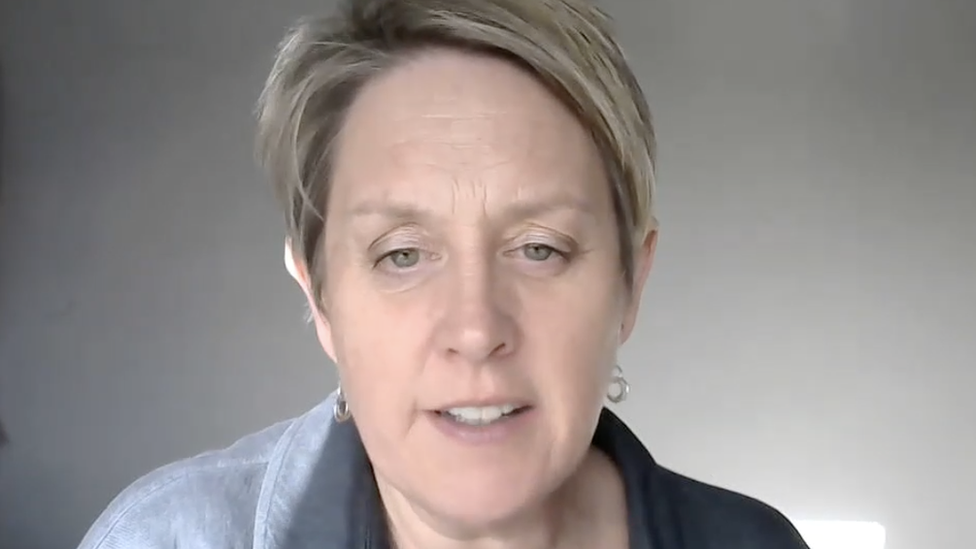
Kathryn Thomson says the exhibition represents the diversity of life in Northern Ireland
'Stimulate conversation'
Trevor White, director of the Little Museum of Dublin, said the event could introduce "a new generation of museum goers to the riches of Northern Ireland".
He said for many people Northern Ireland was both "just up the road and a million miles away".
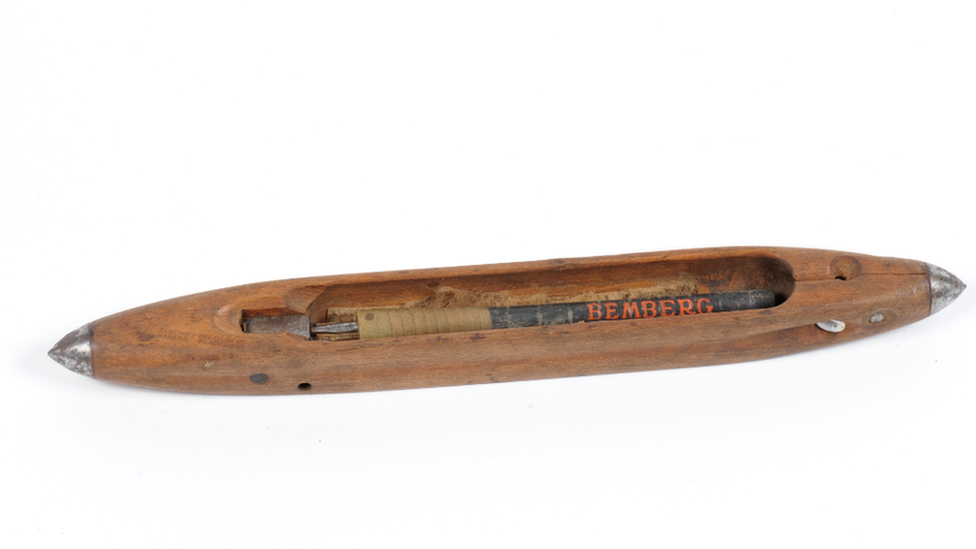
A flying shuttle is used in the exhibition to represent the importance of the linen industry in Ulster
"For us as a relatively small cultural institution in Dublin, it's such a privilege to work with National Museums NI on putting this together," he told BBC News NI.
"The hope is that it stimulates conversation here in Dublin, but it also encourages people to go to Northern Ireland and discover it for themselves."
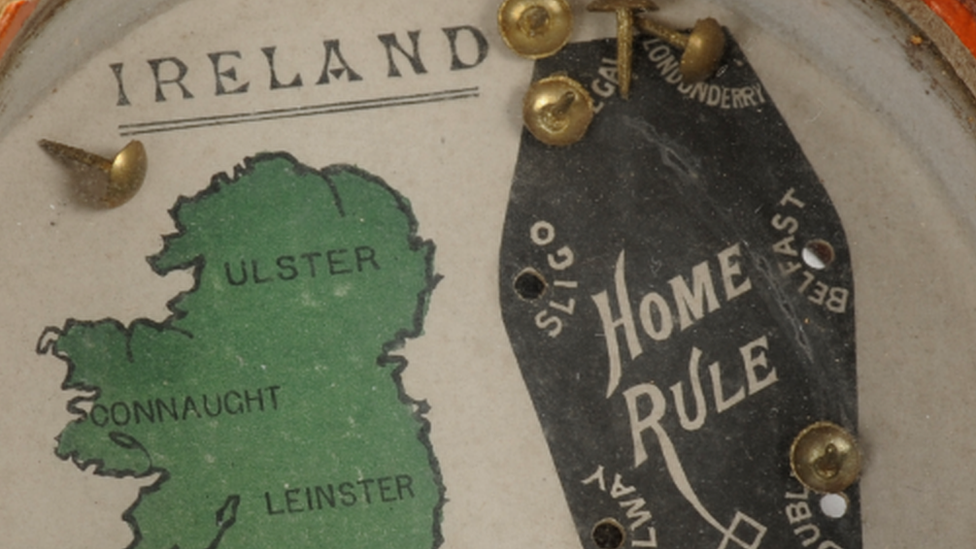
The Home Rule pocket game features metal tacks and holes in a coffin
The museum is close to the Harcourt Street birthplace of Lord Carson, who was both a leader of unionism and a barrister.
Mr White said he was known to Dubliners as a politician and for his role in the prosecution of contemporary and writer Oscar Wilde.
"To invite Dubliners to come and see a portrait of him… it feels like an important thing to be doing," he said.
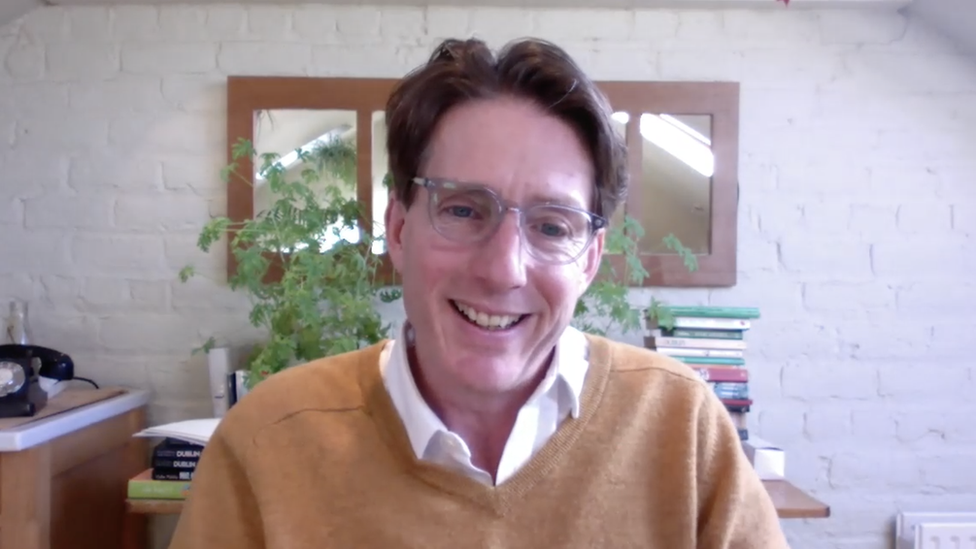
Trevor White says he hopes the exhibition will stimulate conversation
Ms Thomson said the Carson portrait had only recently become part of the NMNI collection.
"Carson is seen very much as a figure of Ulster unionism and yet he was from and born in Dublin and he spoke with a southern accent," she said.
"He was extremely comfortable with both his Irish and his British identity. So in a sense he challenges perceptions himself and so he's an interesting conversation point."
Mr White said some of the other artefacts were less "serious", such as a drawing by James Ashe which depicts the Mr Tayto crisp characters from north and south of the border holding hands, parodying the Hands Across the Divide sculpture in Londonderry.
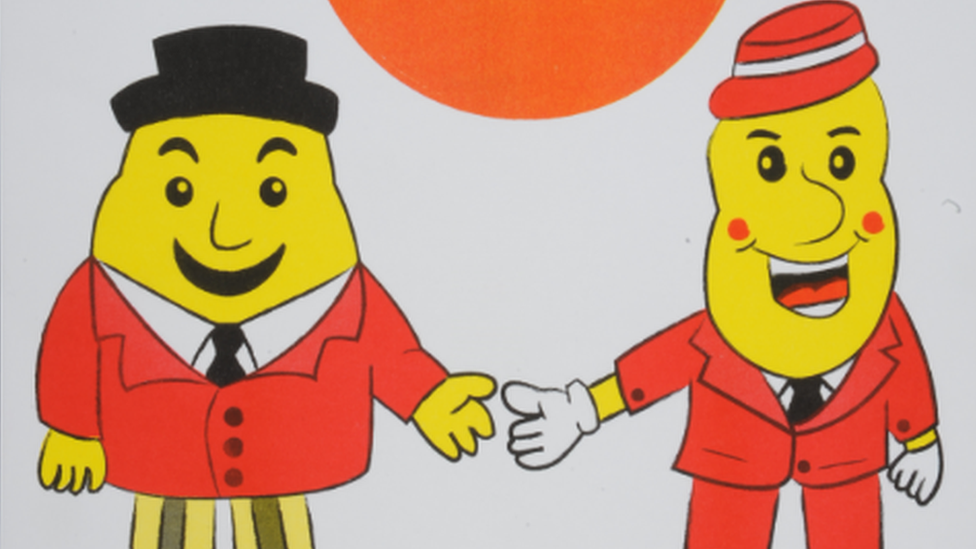
The Tayto Crisps print by James Ashe is a parody of a peace sculpture in Londonderry
It is one example of "speaking to the humour of the north as well, which is great fun".
Another artwork, a 1992 oil painting by Rita Duffy, depicts the security barriers in Donegall Place and how daily life was disrupted in Belfast because of the Troubles.

Security Barrier by Rita Duffy depicts the former security checkpoints in Belfast
Elsewhere, a penannular brooch in the Celtic Revival style of the late 1800s, and a half air screw from Harry Ferguson's first plane which crashed in Newcastle in 1909 reflect the history of life and invention pre-partition.
A more recent item is the Outburst Queer Arts Festival programme from 2014, which Ms Thomson said allowed the collection to "speak to the diversity of who we are and how we identify ourselves".
'Spirit of friendship'
Lord Mayor of Belfast Kate Nicholl described the exhibition as an "opportunity to explore and learn about both our shared and individual identities".
She said the centenary of Northern Ireland in 2021 had "brought a renewed focus" to conversations about identity and belonging.
The exhibition, she added, "is a wonderful example of how this can manifest itself in a creative and compelling way".
This sentiment was echoed by the Lord Mayor of Dublin, Cllr Alison Gilliland, who said the collaboration showed a "spirit of friendship and mutual respect".
She said the exhibit offered "a unique opportunity to gain a really special insight into the social and political culture of our other half".
- Published23 January 2021
